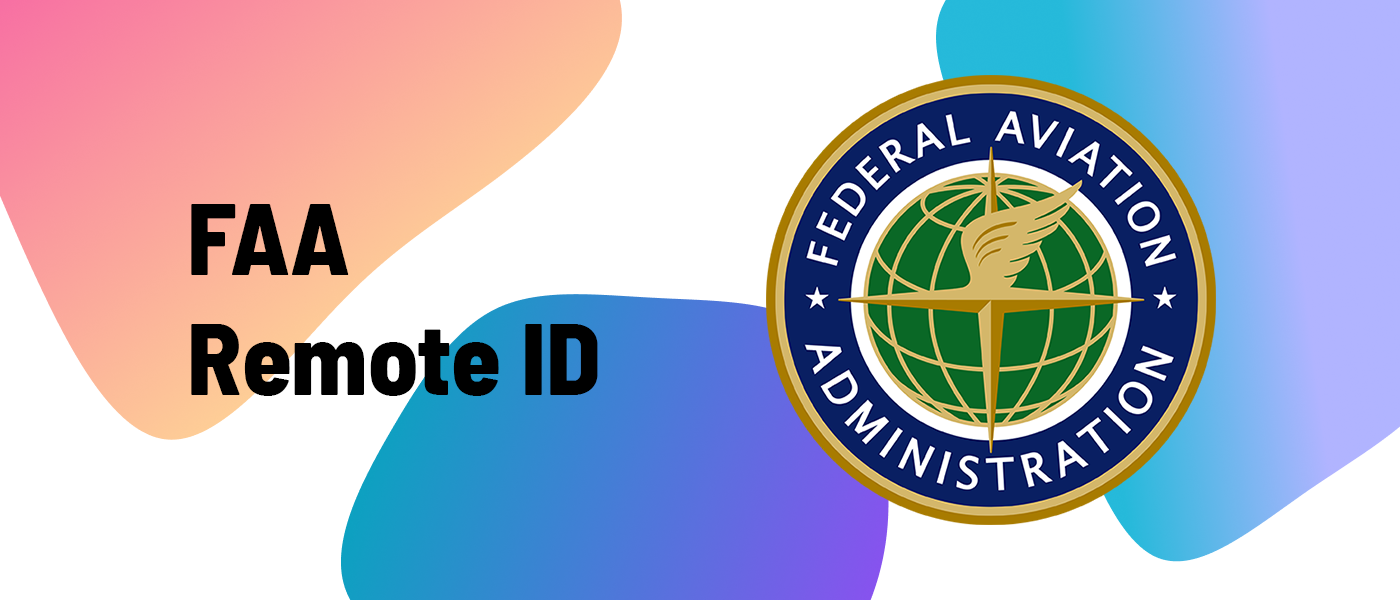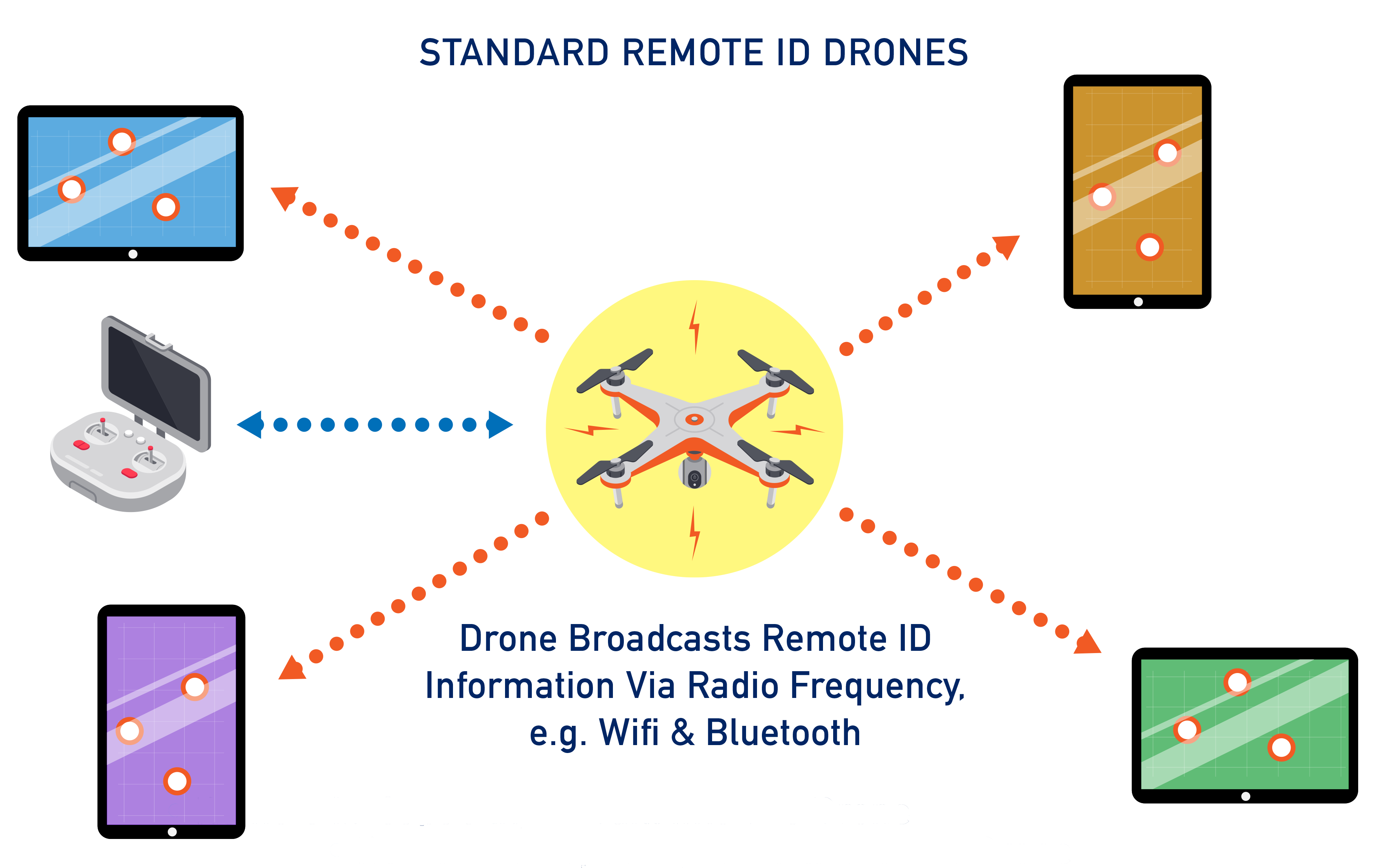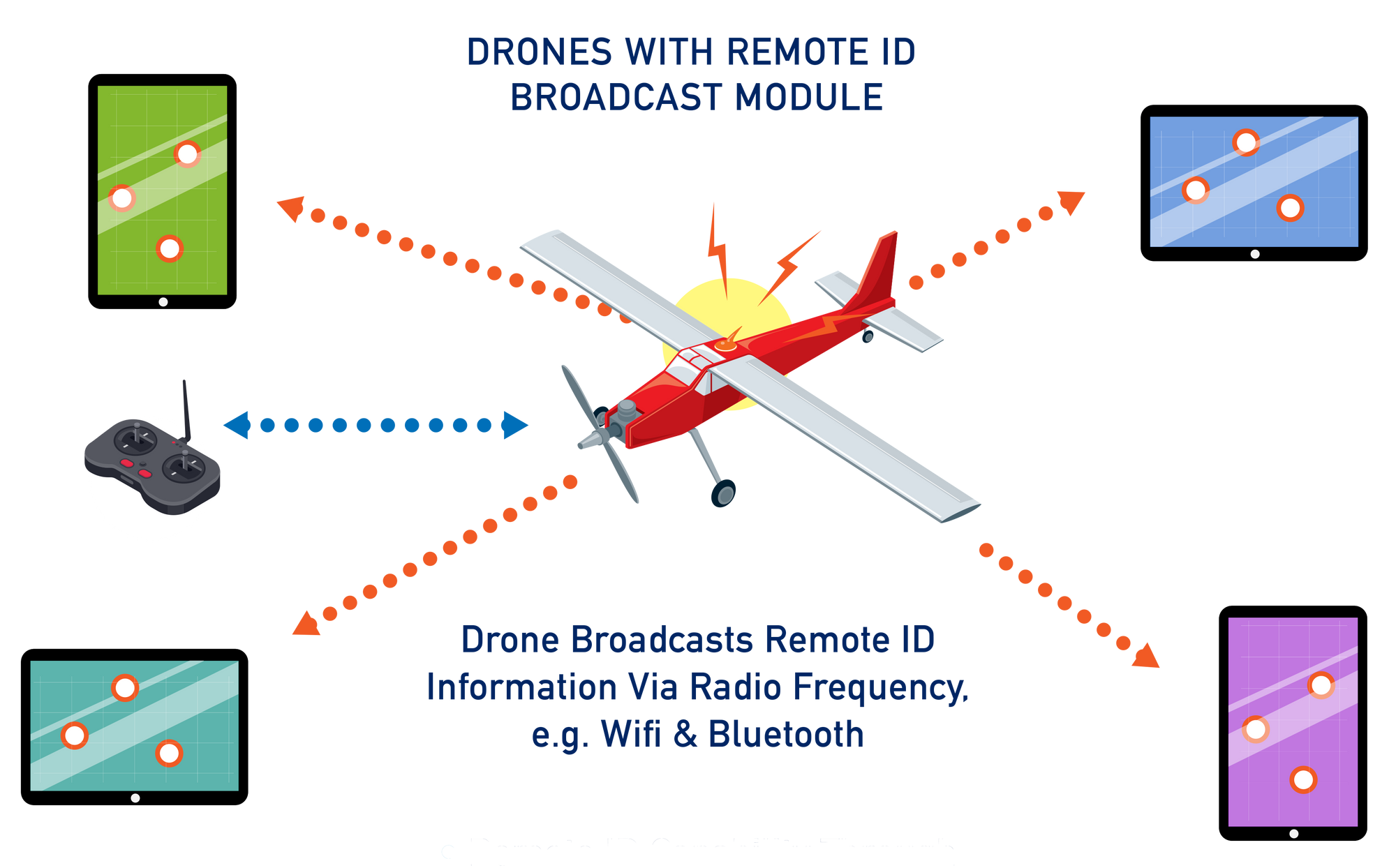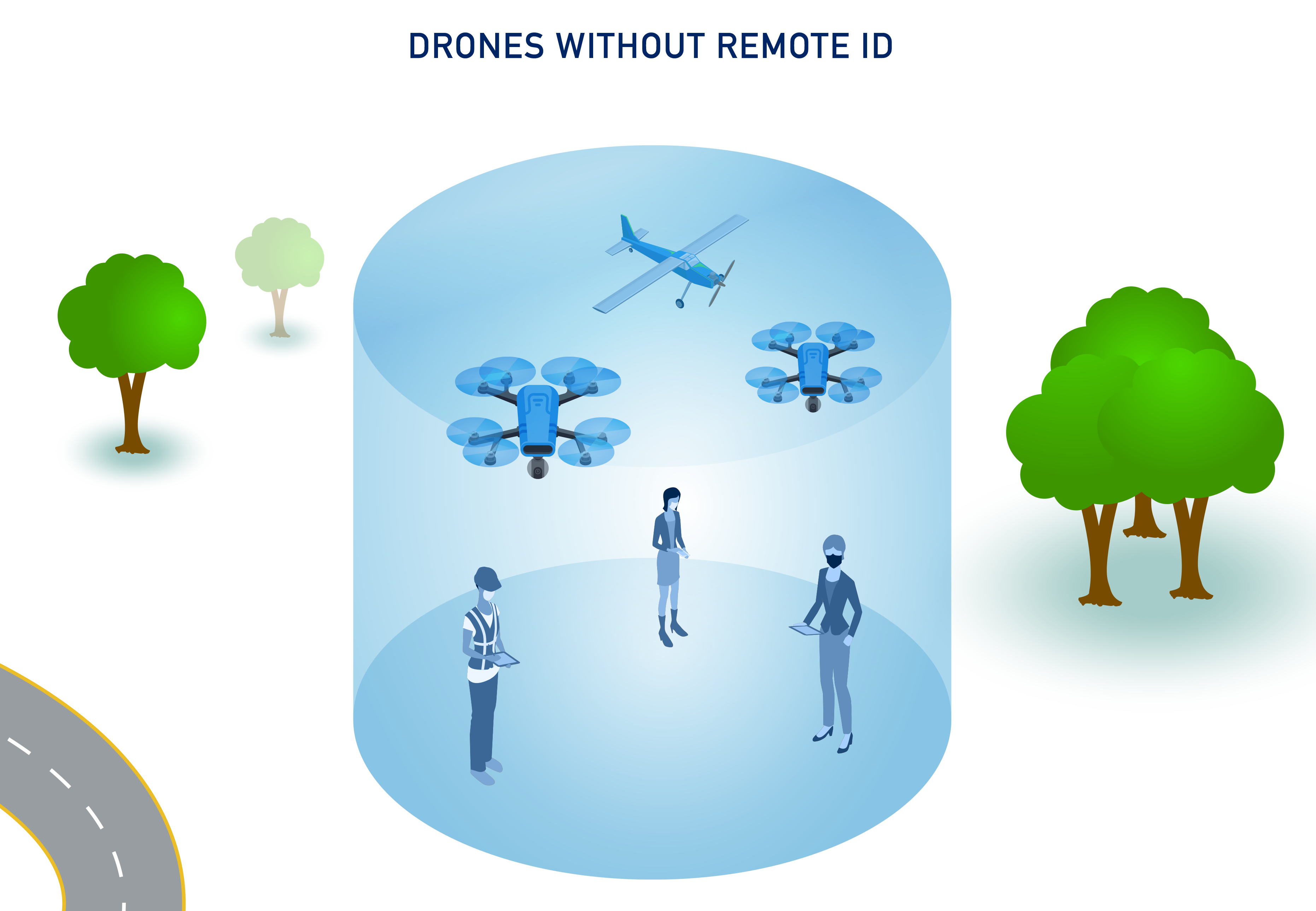Everything to Know About Remote ID For FPV Drones in 2023
Remote ID is the core of the new FAA Part 89, Title 14 of the Code of Federal Regulations that requires almost all drones, hobby and professional, to locally broadcast identifying information.

Drone regulations in the last couple of years, especially as it relates to FPV drones, have been anything but clear. But after recent court rulings and upcoming deadlines, the FAA is enacting Remote ID regulations without any more challenges. In this issue, we walk through what Remote ID is and how that affects FPV pilots.
What Is Remote ID?
Remote ID is the core of the new FAA Part 89, Title 14 of the Code of Federal Regulations that requires almost all drones, hobby and professional, to locally broadcast identifying information, including drone registration, location, and altitude.
In short, most drones will be required to have this broadcasting capability built-in or added to existing drones via hardware or software updates. This capability needs to be turned on from takeoff to landing.
From the FAA's perspective, this is one step to regulate drones and to be able to locate them in case of accidents and emergencies as drones become more commonplace, such as with drone delivery services and the like.
However, as rules were proposed, ambiguity in these rules left fixed-plane hobbyists and FPV recreationalists wondering what would happen to them. This spurred a lawsuit led by RaceDayQuads, a leading FPV retailer, arguing that the proposed rules infringed on our Fourth Amendment rights to unreasonable search and seizure. As of August 2022, courts rejected this claim in favor of the FAA, and the new Remote ID regulations are close to being finalized and enacted by December 2022.
How Does Remote ID Work?
As of now, the FAA details three ways to be compliant with the new rules.
Standard Remote ID Drones

In this scenario, new drones will come standard with Remote ID equipment that broadcasts identification and location data via local Wifi or Bluetooth signals. Think of these as standard drones like DJI Mavics or commercial delivery drone swarms.
Drones With Remote ID Broadcast Modules

This will apply the most to FPV drones. In this scenario, drones are equipped with software or hardware that broadcasts identification and location data via local Wifi and Bluetooth signals. When these rules go into effect fully, all FPV drones will require either an added module, or hardware and/or software integrated into a flight controller that broadcasts this data. As of August 2022, there is no equipment or software available that enables FPV drones to be compliant.
It's also worth noting that drones equipped with this equipment are not eligible for operations beyond visual line of site. But FPV pilots have always operated in a gray area because the FAA doesn't recognize the goggle's view as visual line of site and a visual observer/spotter was required. According to Dave Messina of the FPV Freedom Coalition, in a conversation with an official at the FAA, the FAA's intent is to still allow FPV flight as it was despite the language in the new rules.
No Remote ID at FRIAs (FAA-Recognized Identification Areas)

Community-based organizations and educational institutions can request specific geo-fenced areas called FAA-Recognized Identification Areas (FRIAs) where drones without remote ID can be flown legally. While no one has applied for these yet, the FAA rules suggest that these are fixed locations like parks. It remains to be seen how drone races that move from city to city, like those of the Drone Racing League, will be affected.
How Does Remote ID Affect Me?
Recreational Pilots
Most of us just fly for fun and we want to keep it that way. These are the key changes to look out for as of August 2022. Keep in mind that these rules and dates still have room for change:
By September 2022, retailers and manufacturers who make and sell complete drone kits, like bind-and-fly drones, that weigh more than 250g must comply with the new rules. (UPDATE: now December 2023, the FAA pushed out this deadline by 3 months). This effectively means that all the current BNF drones for sale right now cannot be sold because there are no remote ID modules available to purchase yet.
However, within the details of the regulations, any drone that a hobbyist builds solely for educational or recreational purposes is excluded. That means that technically, it is legal for retailers to remove a part that the buyer installs themselves. For example, PNP drones, which typically don't include receivers, would be exempt. So buying BNFs and RTFs may be off limits, but the workaround seems pretty easy.
By September 2023, all pilots who fly drones that weigh more than 250g are required to have Remote ID capabilities unless they're flying in a FRIA (FAA-Recognized Identification Area). There aren't any Remote ID modules that we can stick on our FPV quads today, but we can expect to see these in the coming year.
If you fly with a sub-250g drone, and/or you fly indoors, nothing changes. So tinywhoops up to 2.5" quads are spared from these rules.
In short, for the time being, nothing changes, but you can anticipate adding a little module to your quad to be in compliance in the next year.
Again, until September 2023, drones you build yourself are exempt from these rules. We suggest planning your build on QuadPartPicker! After September 2023, parts and software will be released that allow you to retrofit any drone you build to transmit the required data.
Professional Pilots
For anyone who has a Part 107 Certificate, the rules above also apply to professionals.
This can be frustrating to professional pilots as it adds extra steps to their process. Since PNP drones are exempt from RemoteID rules until September 2023, you can find PNP drones across retailers here.
In an interview with Joshua Bardwell, Dave Messina of the FPV Freedom Coalition had a conversation with Kenji Sugihara, Executive Director of FAA UAS Integration and confirmed that the FAA's position is to allow home-built drones (including PNPs) with Remote ID can fly as Part 107.
How Will Remote ID Be Enforced For FPV?
This is the big question and the answer is still ambiguous.
Remote ID gives local enforcement like sheriffs and police officers the ability to access Remote ID data like your quad's location, but it's up to the FAA to give jurisdiction to the local law enforcement to carry out enforcement.
With that said, we don't know how the new rules will be enforced. Local agencies tend to be slower than FPV hobbyists in knowing federal drone regulations. You may encounter local law enforcement that will give you a hard time, or are just curious about what you're up to. As long as you're in compliance and know your rights, stand by them. To date with existing FAA rules, the FAA has really only intervened when rules were flagrantly violated or in the case of accidents.
What Are the Implications of Remote ID
Now, we get into just speculation and possibilities. Currently, any and all drones can fly up to 400 feet above ground level in non-restricted airspace without much other regulation. Prior to Remote ID, there was almost no enforcement of this rule. But with Remote ID enacted, it's possible for applications to pick up Remote ID signals and enforce this rule more easily.
For example, the FAA can work with local law enforcement to create an app that picks up your RemoteID signal and sees that you've flown into restricted airspace. Because they know your drone registration, they can send a citation to your home. Whether this will actually happen remains to be seen, but it makes the possibility of enforcement a lot more probable.
The data transmitted via RemoteID will be able to be accessed publicly by law enforcement or any person who can pick up the signal. We expect to see mobile applications released that will be able to do this easily. That means everyone from your local cops to your neighbors next door would have the ability to discover your drone's location. Depending on who you ask, this can infringe on your right to privacy.
A lot of details are still unknown, but we'll keep you posted when they are. We'll update this issue to reflect new information about Remote ID. Keep checking back for more the latest updates.
We at QuadPartPicker will update our tool to include Remote ID-compliant parts and quads as they become available.
And until September 2023, self-built drones are exempt from RemoteID, so build a quad on QuadPartPicker!
